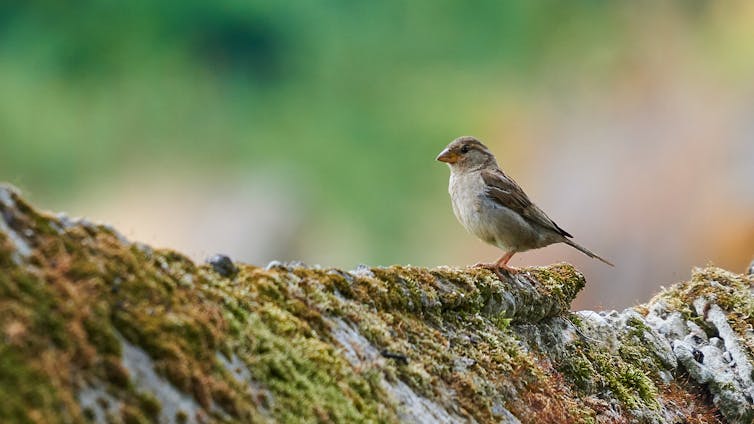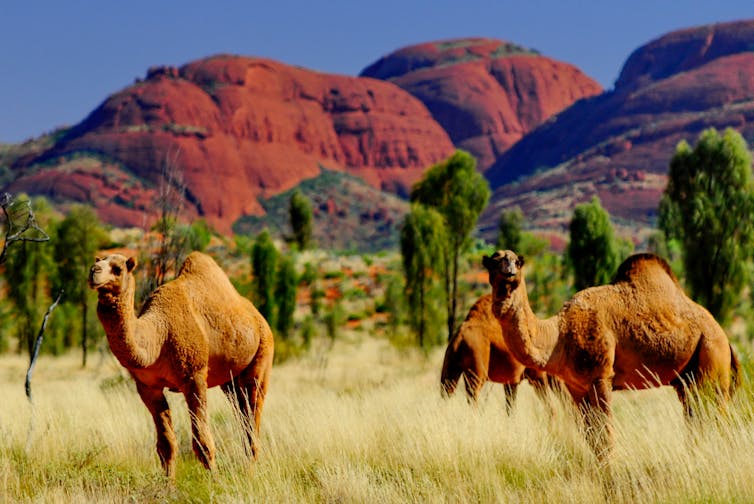Victorian efforts to export animals to new worlds failed, mostly
Acclimatization societies believed that animals could fill the gaps of a deficient environment.

In 1890, a New York bird enthusiast released several dozen starlings in Central Park. No one knows for sure why Eugene Schieffelin set the birds aloft, but he may have been motivated by a sentimental desire to make the American Northeast more like the English countryside.
The consequences of his action were unintentionally massive. Today, there are nearly 200 million starlings in North America. Schieffelin was a member of the American Acclimatization Society, a worldwide effort to diversify local fauna and flora. Similar organizations existed in Europe, Australia and New Zealand. As the British acclimatization society put it, these organizations aspired to introduce “all innocuous animals, birds, fishes, insects, and vegetables, whether useful or ornamental.”
Schieffelin’s was not the first attempt to remedy perceived deficiencies in North American bird populations. Some members of these societies, often people with wealth, simply wanted to beautify their surroundings. Other acclimatizers had more pragmatic goals when they introduced exotic animals into new territories.
The house sparrow, camel, skylark, nightingale and various deer species were among the animals that acclimatizers introduced. And, despite the perception that these interlopers edged out native species, for the most part, acclimatization efforts neither thrived nor lasted. As an environmental historian, I am exploring both the successes and the failures of this movement as part of a larger historical study of animals that occupy the gray area between wildness and domestication.
The English sparrow settles in America
The English or house sparrow, like the starling, is now among the most common North American birds. It was apparently introduced into the U.S. by a nostalgic Englishman named Nicolas Pike in 1850. The bird was subsequently reintroduced in various locations in the eastern U.S. and Canada. Nearly two decades later, the sparrow’s adaptation to North America was a noteworthy passerine triumph.

In 1868, The New York Times celebrated the “wonderfully rapid increase in the number of sparrows which were imported from England.” They had done “noble work” by eating the inchworms that infested the city’s parks, described by The Times as an “intolerable plague.”
The reporter praised the kindness of children who fed the sparrows and those who subscribed to a fund that provided birdhouses for “young married couples.” He promised that, if they continued to thrive, English sparrows would be claimed as “thoroughly naturalized citizens.”
But only two years later, the tide was turning, and people soon came to a different conclusion. A headline in The Times read: “Our Sparrows. What They Were Engaged To Do and How They Have Performed Their Work. How They Increase and Multiply—Do They Starve Our Native Song-Birds, and Must We Convert Them Into Pot-Pies?”
Rough terrain, a camel for the job
While the English sparrow was making itself at home on the Eastern Seaboard, another creature was having a very different acclimatization experience in the Southwest. After the American annexation in 1848 of what became Texas, California, Arizona and New Mexico, the U.S. Army found that patrolling the vast empty territory along the Mexican frontier was a daunting task, especially in the absence of roads. Horses and mules that normally hauled soldiers and their gear did not function efficiently in this harsh new environment.
The soldiers and merchants of North Africa and the Middle East had solved a similar problem centuries earlier. Several officials serving in the dry trackless regions persuaded Jefferson Davis, then the U.S. secretary of war, that what the Army needed was camels.
In 1855, Congress appropriated US$30,000 to test the idea. A total of 75 camels survived their ocean voyages and subsequent treks to Army posts throughout the Southwest. The officers who used them on missions were, on the whole, favorably impressed. The muleteers who took care of them tended to hold the opposite opinion.
But military priorities shifted with the outbreak of the Civil War. Some camels were sold to circuses, menageries and zoos. Others were allowed to wander off. They were chased and hunted, and during the postwar decades their population dwindled. In 1901, a journalist reported that “now and then a passenger on the Southern Pacific Railroad…has had a sight of some gaunt, bony and decrepit old camel…grown white with age … as wild and intractable as any mustang.”
Working animals sidelined by vehicles
In Australia, similar problems – vast deserts that had to be traversed by people and their equipment – suggested similar solutions. In the 1860s, just as the Civil War deflected official interest from North American camels, their counterparts in Australia were beginning to flourish. Their usefulness outweighed the perception that they could be spiteful, sulky and insubordinate. A camel breeding farm was established in 1866. More than 10,000 camels were imported in the next 50 years. They remained important until the 1920s, when they were supplanted by cars and trucks, the same fate that befell horses in many places.
Suddenly, what had seemed an unusually successful adventure in acclimatization took on a different cast in Australia. As in the American Southwest, once camels lost their utility, they became superfluous. There was no significant circus or zoo market for animals that had long ceased to be exotic. As a result, some were shot. Others were set free to roam by kinder-hearted owners, where they foraged and reproduced in the harsh terrain.

As of 2009, the Australian government numbered the feral descendants as close to 1 million, the largest herd of free-living camels in the world. They compete for resources with other animals, wild and domesticated, and they can disrupt fragile desert ecosystems. They have been occasionally reported to terrorize small towns.
Despite vigorous culling campaigns, there are still a lot of them. Unsurprisingly, in a pattern that has also emerged with regard to feral horses, burros and pigs in North America, as officials contemplated drastic methods of reducing the population, human resistance also emerged. Objections included concern for the welfare of individual camels, the hope that camels could be converted dead or alive into a profit center as meat or tourism, or the fear that large-scale eradication would violate property rights.
More often than not, failure
Like American starlings and sparrows, the success of Australian camels was the exception, not the rule, of 19th-century acclimatization attempts. Far from becoming invasive, most efforts met with failure. Aficionados of British birds, for example, released nightingales and skylarks into American parks, but they disappeared without making any impact on the indigenous fauna.
Nevertheless, the few intentionally introduced species that flourished now somewhat misleadingly represent the inevitable consequences of these early attempts to diversify a range of native faunas. Yet for every species that increased beyond the wildest anticipations of the acclimatizers, there were more that, like the skylark and the nightingale, vanished without a trace.
The many failures have been forgotten. A few extreme successes are now considered invasive. And many species have been inadvertently introduced or, like the coyote and the opossum in North America, have extended their ranges without assistance from humans.
[ Deep knowledge, daily. Sign up for The Conversation’s newsletter. ]
Harriet Ritvo does not work for, consult, own shares in or receive funding from any company or organization that would benefit from this article, and has disclosed no relevant affiliations beyond their academic appointment.
Read These Next
From truce in the trenches to cocktails at the consulate: How Christmas diplomacy seeks to exploit s
World leaders like to talk up peace at Christmastime. But alongside the tales of seasonal breaks in…
Medieval peasants probably enjoyed their holiday festivities more than you do
The Middle Ages weren’t as dreary and desperate as you’d think, and peasants often had weeks of…
Autocracies in transition: In 2025, Cameroon and Tanzania rulers clung to power — but look more vuln
The countries, whose respective leaders recently won widely disputed elections, offer contrasting examples…





